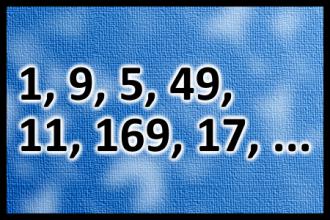What number comes next?
Look at the series (1,9,5,49,11,169,17), determine the pattern, and find the value of the next number!
Speed Limit
Sitting on the edge of the highway waiting to catch speeders, a state police officer saw a car driving along at 22 M.P.H. He thinks to himself, that car is just as dangerous as a speeder. So, he turns his lights on and pulls the car over. Approaching the car, he notices there are 5 old ladies, two at the front and 3 at the back, wide eyed and looking like ghosts.
The driver, obviously confused, said, "Officer, I don’t understand, I wasn’t doing over the speed limit! What did you pull me over for?"
"Ma’am," the officer said, "You should know that driving slower than the speed limit can also be dangerous".
"Slower than the speed limit? No sir! I was doing exactly 22 miles an hour", the old woman said proudly.
The officer, trying not to laugh, explains that 22 is the route number, not the speed limit. A little embarrassed, the woman smiled and thanked the officer for pointing out her error.
"Before I go Ma’am, I have to ask, is everyone ok? These women seem badly shaken and haven’t said a word since I pulled you over."
"Oh! they’ll be all right in a minute, officer. We just got off Route 142" ...

